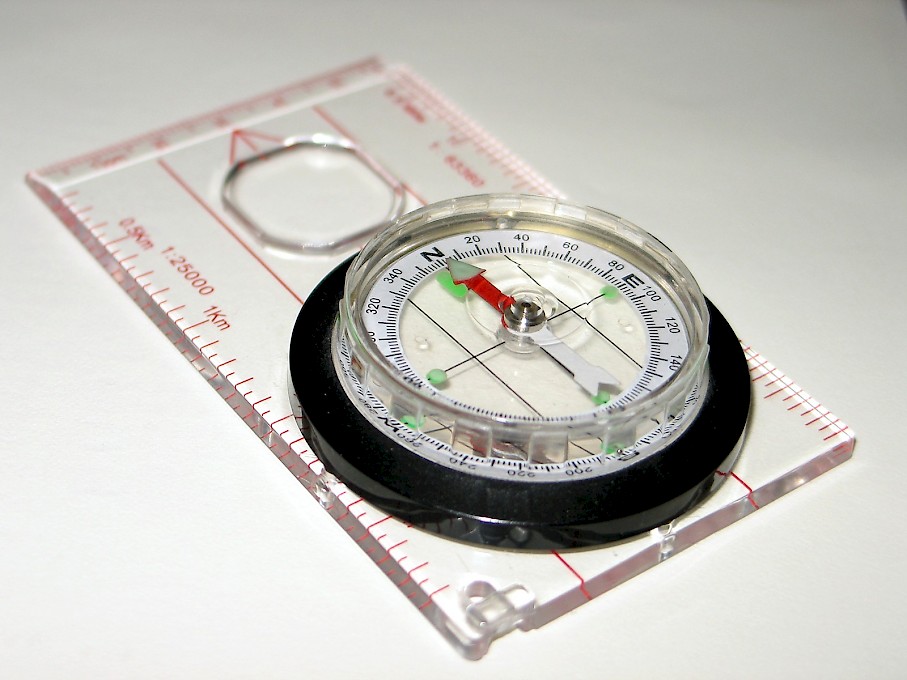Floating Compass

Did you know that planet Earth has a magnetic field? Did you know that you can turn needles into magnets? With this know-how we'll make our own floating compass!
Preparation
First we need to magnetise the needle (turn the needle into a magnet) - doing this is easier than you think!
- Holding the needle very carefully, stroke the magnet from the eye end (where it's threaded) all the way to the point and lift it away. If your bar magnet has an end labelled "N" or painted red, use this end - don't worry if it doesn't - just choose either end and use only that end.
- Do the same again in exactly the same direction, up to about 50 times. Always make sure you stroke the needle in the same direction and always lift the magnet away at the end of each stroke.
- You will now have a magnetised needle!
Experiment
- Draw a circle on some paper. The circle should be half the size of the bowl or less.
- At one edge of the circle write the letter "N" for north.
- At the opposite side write the letter "S" for south.
- Between the "N" and the "S" with the "N" at the top, on the left-hand edge, write the letter "W" for west.
- On the opposite edge write the letter "E" for east.
- Carefully cut out your circle.
- Now the tricky bit - thread the needle into the paper circle near the "S" and out again near the "N", so that it's straight between "S" and "N" and the point is pointing at the "N".
- Now the next tricky bit! Carefully place your paper circle onto the water in the bowl so that it floats in the middle. Give it a moment, what does it do?
Your floating compass should turn and point to the north, hopefully before it gets too soggy and sinks! You can check it by comparing it with a factory-made compass or with a compass app on a mobile device. If your compass points the wrong way, take the needle out and put it the other way in. Make sure you keep it away from the magnet and any metal objects (including computers) as they will interfere with which way it points.
So what's happening?
Usually a needle is not magnetic because magnetic regions inside it are pointing in different directions. Each is like a tiny magnet, but their magnetic fields cancel each other out. When you stroke the needle with the bar magnet you encourage many of the regions to align in the same direction, and their combined field becomes stronger and the needle becomes magnetic!
The much stronger magnetic field of the Earth attracts each end of the needle. When you allow the needle to float in water on its piece of paper it allows the needle to align to the Earth's magnetic field with N pointing north because while it's floating in water it can rotate easily with little friction. Ta da, homemade floating compass!
What if?
What would happen if you:
- Brought the bar magnet near to the bowl of water?
- Used a non-magnetised needle?
- Used a bowl with no water?
- Tied the bar magnet around its middle on some long thread and let it hang?
